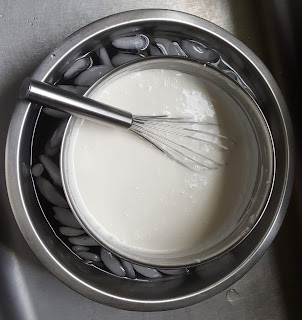at Spice Xing ……………... now a different look at the use of spices
Spices
have been used in India for thousands of years not only for enhancing the taste
of dishes but
for their therapeutic value and also to counteract the negative
residual physiological effects of foods
on the human body.
KOKUM
Fruit of Garcinia Indica
tree used mainly in the hot Southern states for its cooling properties and for
alleviating skin allergies.
AJWAIN
Carom seeds or Bishop’s weed seeds are used for their volatile Thymol
oils to aid in digestion & are used with starchy vegetables and lentils.
CHILLIES
Are used both ways either fresh or dry. Usage is
more common in the hot climes to increase perspiration and thereby cool the
body. They also have a medicinal value for easing joint inflammation and
respiratory disorders.
NUTMEG & MACE
Nutmeg used sparingly is supposed to cure insomnia
and is frequently mixed with warm milk and taken before sleeping. The covering of
nutmeg (calyx) is Mace and is considered to ease rheumatism.
FENUGREEK
The leaves, the shoots and the seeds of this plant
are used. Ground seeds with water are supposed to cure diabetes, cholesterol
and hypertension. It is also given to lactating women for increased milk
production. It
is used as a natural testosterone/muscle booster.
TURMERIC
This rhizome of the Curcuma Longa has a multitude of uses in addition to imparting the
characteristic yellow in the “CURRY”. It has an excellent antiseptic and anti
bacterial effect, often used to treat common cold, cuts and bruises. As a
cosmetic it is applied directly on the skin and it reduces acne too. Its latest
use is in the treatment of Alzheimer’s disease.
ASAFOETIDA
This resin of a plant has a pungent sulfurous odor
and is mainly used as a digestive. Also provides relief in asthma and
bronchitis.
SAFFRON
Quite truly the King of spices at a whopping
$11,000/lb for the best grade. It has the most volatile oils of any spice. Used
very sparingly, it is supposed to have anticarcinogenic and antioxidant effects;
although historically in India it has primarily been used as an aphrodisiac.














































